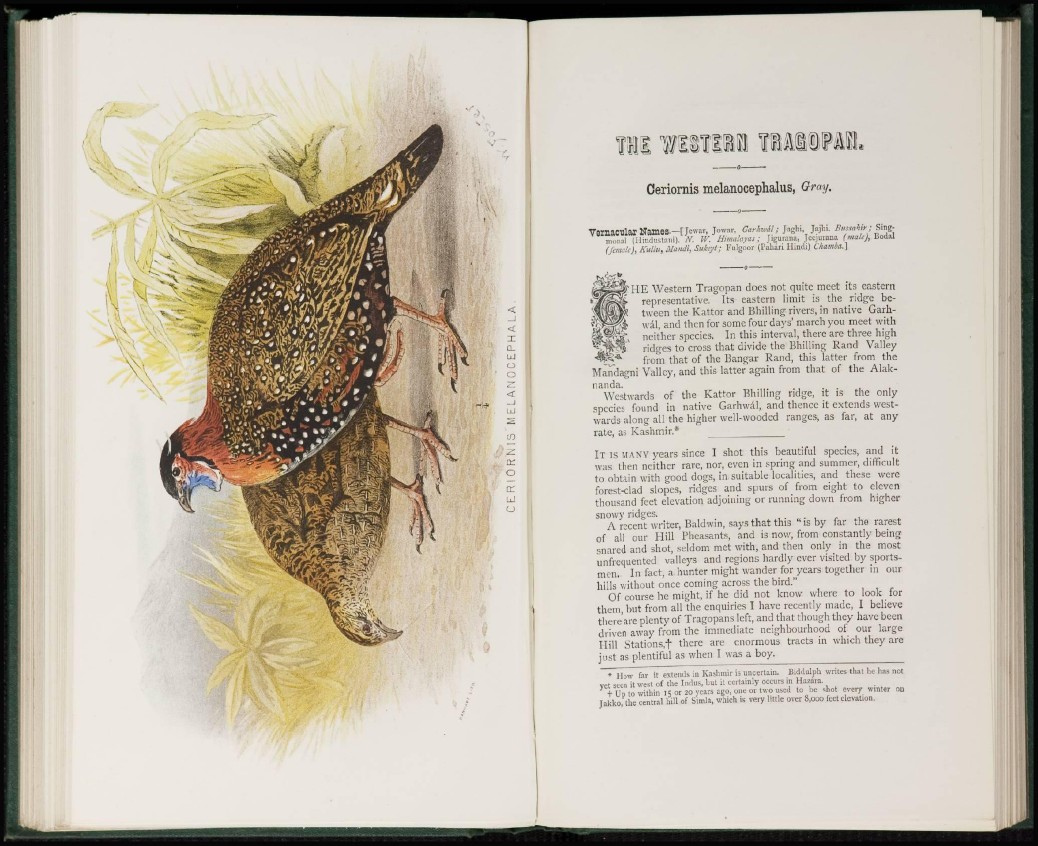
I l l f l l f lM UlllfML
Oeriornis melanocephalus, Gray.
Vernacular Names—tJewar, J w a r , Gerkwdl; Jaghi, JajH. Smg
monal (Hindustani). /V. W. Himalayas; Jigurana, Jeejurana (mull), Bodal
(female), Kulhi, Mandi, Suktyt; Fulgoor (Pahari Hindi) C/iamia.]
HE Western Tragopan does not quite meet its eastern
representative. Its eastern limit is the ridge between
the Kattor and Bhilling rivers, in native Garhwal,
and then for some four days' march you meet with
neither species. In this interval, there are three high
ridges to cross that divide the Bhilling Rand Valley
from that of the Bangar Rand, this latter from the
Mandagni Valley, and this latter again from that of the Alaknanda.
Westwards of the Kattor Bhilling ridge, it is the only
species found in native Garhwal, and thence it extends westwards
along all the higher well-wooded ranges, as far, at any
rate, as Kashmir.*
I T IS MANY years since I shot this beautiful species, and it
was then neither rare, nor, even in spring and summer, difficult
to obtain with good dogs, in suitable localities, and these were
forest-clad slopes, ridges and spurs of from eight to eleven
thousand feet elevation adjoining or running down from higher
snowy ridges.
A recent writer, Baldwin, says that this "is by far the rarest
of all our Hill Pheasants, and is now, from constantly being
snared and shot, seldom met with, and then only in the most
unfrequented valleys and regions hardly ever visited by sportsmen.
In fact, a hunter might wander for years together in our
hills without once coming across the bird."
Of course he might, if he did not know where to look for
them, but from all the enquiries I have recently made, I believe
there are plenty of Tragopans left, and that though they have been
driven away from the immediate neighbourhood of our large
Hill Stations,-)" there are enormous tracts in which they are
just as plentiful as when I was a boy.
* How far it extends in Kashmir is uncertain. Biddulph writes that he has not
yet seen it west of the Indus, hut it certainly occurs in Hazara.
t Up to within 15 or 20 years ago, one or two used to be shot every winter on
Jakko, the central hill of Simla, which is very little over 8,000 feet elevation.